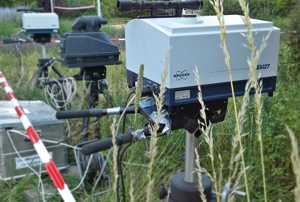
SQuAD
Spatially resolved quantification of the advection influence on the balance closure of greenhouse gases
Duration: 2015-1017 (24 months)
Funding: DFG
Partner: TU Dresden; Faculty of Environmental Sciences, Department of Hydrosciences, Meteorology, Dr. A Ziemann, Prof. Ch. Bernhofer
The motivation for this project is derived from the closing gap for energy balance measurements that is still observed at all stations in the global measuring networks. Therewith, significant consequences for the measurements of the greenhouse gases (GHG) balance are associated. This imbalance exists although all necessary corrections and calculations are applied to the measurement of flows using the eddy covariance method. Obviously, the existing measurement methods do not capture all relevant transport mechanisms. That causes an uncertainty in the crucial determination of the mass balance of GHG of natural surfaces. This uncertainty has an impact on the confidence level of meteorological forecast models and thus on the reliability of adaptation strategies to climate change. The main objective of the project is therefore to quantify systematically methodological uncertainties in determining the balance of greenhouse gases.
An important mechanism in this context is advection produced for instance by low-frequency-exchange processes. The associated circulation pattern, such as quasistationary secondary circulations, can be caused by heterogeneities in the properties of the earth's surface. Spatially averaging and resolving measurement methods are generally able to determine the required quantities of the horizontal and vertical advection for the closure of the GHG balance.
An innovative combination of ground-based remote sensing methods of acoustic tomography (A-TOM) and open-path Fourier transform infrared spectroscopy (OP-FTIR) with the eddy covariance method enables the necessary transition from point to spatially resolved local scale.
This integrative research approach aims to quantify the distribution of GHG concentrations and wind vector in a consistent spatio-temporal resolution applying tomographic measurement and analysis procedures. With the derived advection, the closure gap of GHG balance measured by eddy covariance will be assessed. Simultaneously, numerical modeling of the atmospheric boundary layer is used as an effective and flexible tool to determine the link between the measured exchange processes at one location and the contributing source areas. The appropriate model development also allows a generalization of the results obtained by measurement for other flow measuring stations and longer periods. By this, the project will contribute to an optimized data assimilation of GHG flux measurements in mesoscale atmospheric models. Therewith, the understanding of the terrestrial GHG exchange as well as the dynamics of GHG sources and sinks is significantly improved.
